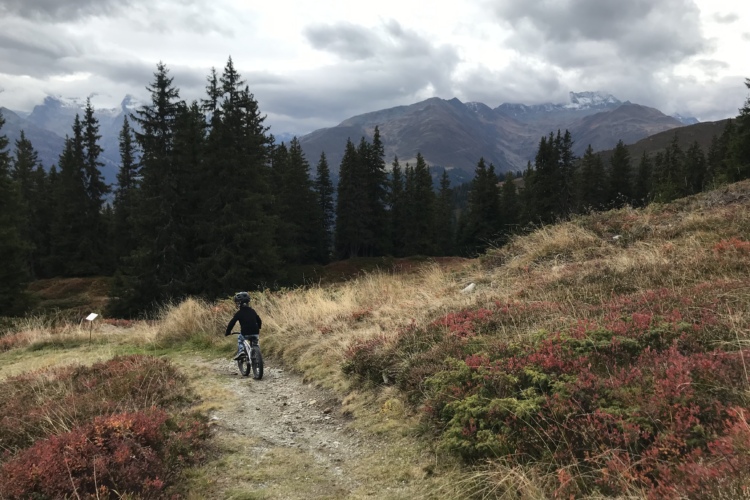
After nearly a decade in higher education, I have spent my fair share of time sifting through studies and peer-reviewed articles. While working on an undergraduate degree in sociology, most of the studies I read concerned a variety of subjects, such as groupthink and cognitive dissonance. Years later, I pursued a master’s in teaching, with studies focused on new theories of best teaching practices.
Needless to say, I was surprised to see any empirical research—in this case, a systematic review—focused explicitly on mountain biking. The study gathered data on mountain biker and hiker injuries and the bodily location of those injuries. Ph.D. candidate Paul Braybrook and his team rounded up reports on injuries from across the globe and meticulously scoured them.
While the data’s findings may not strike you as outrageously surprising, the potential implications for creating safer trails are significant. I was able to connect with Braybrook to discuss this systematic review, other studies he and his team conducted, and the impact they could have on creating safer trails.
The Study
Braybrook resides in Fremantle, Western Australia, where he has been a paramedic for the last seven years. Australia’s standards for becoming a paramedic differ from that of the United States, with the education for the position being more similar to that of a registered nurse here in the States.
“In Australia, paramedics are degree-qualified,” Braybrook told me as he explained his pursuit of a Ph.D. Braybrook studies at Curtin University, where his Ph.D. focuses on injuries and medical events in recreational trail users.
As part of his Ph.D., Braybrook is conducting a series of research projects, the first of which is a systematic review. “What a systematic review does is it uses a systematic methodology to identify all of the studies that have been done in [a] specific area,” Braybrook explained. “You can then drill down into those and answer specific questions, forming a good background for the rest of your studies.”
Along with the initial systematic review that caught Singletracks’ attention, Braybrook and his team have conducted three other research projects, each diving into a different aspect of trail-related injuries.
For the systematic review, Braybrook looked at every documented study regarding mountain biking or hiking injuries. The data collection spanned years, cycling disciplines, and databases, with massive results—data on nearly 220,000 mountain bike injuries and nearly 18,000 hiker injuries.
“My study brought all of that [data] together into a large cohort,” Braybrook said. “So you can look at what’s happening based on all of the evidence and come to conclusions.”
And what were the results? Well, they may not seem too outlandish—mountain bikers suffered more injuries to the upper portions of their bodies and hikers to the lower portion. However, the implications of these results could cause people to rethink things in the future.
Let me explain.
Hikers and E-bikes
Initially, this article was to focus on the mountain bike side of the study. But as my conversation with Braybrook continued, he brought up an interesting connection between hikers in the study and the growth in popularity of e-bikes.
To be clear, this is just one possible theory, not a conclusion from any of Braybrook’s studies. But, as we see more trails, such as those in Tahoe and Jackson Hole, being opened to e-bikes here in the States, Braybrook shared that we may see an increase in significant medical injuries beyond the broken bones of his study.
Mountain bikers broke their arms, and hikers broke their legs—that may not be the most surprising thing Braybrook’s study revealed. However, the study also showed that hikers were far more likely to be medically unwell. This meant that they were not dealing with injuries, such as a broken bone, but instead were suffering medical issues, such as a heart attack.
While Braybrook doesn’t have the data to back this up, it seems that there may be a connection between hikers being less fit than mountain bikers. The fact that mountain biking requires obtaining a bike to participate automatically creates a higher barrier of entry than hiking does. Pedaling a bike up a hill can seem more physically active than just walking up it, so people may lean toward hiking more than mountain biking.
“Someone is going to see their doctor, and the doctor tells them they really need some exercise,” Braybrook theorized. “[They choose] hiking. It’s a low barrier to entry; anyone can do it. You don’t need previous experience.”
Thus, more “unwell” hikers set off on the trails than “unwell” mountain bikers. Braybrook said the data was 90% injuries and 10% medically unwell for mountain bikers versus a nearly 50/50 split for hikers.
So, where do e-bikes come in? If hiking is a lower barrier of entry than mountain biking, e-bikes, in many ways, can bring mountain biking’s barrier to entry down. In Braybrook’s example, a person whose doctor tells them to get more exercise may think there is no way they can pedal up a hill on a mountain bike. But, if that person has some assistance pedaling up that hill, they are more likely to pursue mountain biking with an e-bike. Yes, there is still the barrier to obtaining an e-bike, but perhaps the mental block or doubt of their ability to do it is lifted.
And just to be clear, Braybrook is not advocating that only physically fit people join mountain biking. On the contrary, he is simply pointing out that the data he collected showed that hikers can tend to overexert themselves due to poor health. While still in the assumption phase, Braybrook wonders if this will also happen as e-bike access grows.

Making Trails Safer
Braybrook shared that over the past few years in Western Australia, they have seen a disproportionate increase in mountain bike-related injuries compared to the rise in the sport’s participation.
“Participation is going up at around 2-5% per year in mountain biking,” Braybrook shared. “Injuries for mountain biking in the last six years has gone up about 130%.” Braybrook attributes much of this increase to higher speeds and the increasing popularity of flow trails.
Over the years, Braybrook, an avid mountain biker, has noticed fewer lower-speed technical trails being built. He wonders if replacing these trails with the berms and jumps of flow trails has led to the disproportionate increase in injuries.
However, Braybrook isn’t opposed to flow trails, tech trails, or any trail being built. His hope that these studies will make the trails safer doesn’t in any way equal “dumbing down” the trails or making them any less difficult.
On the contrary, Braybrook believes that mountain biking has inherent risks, but the physical, mental, and spiritual benefits outweigh those risks. However, Braybrook thinks his studies can shed light on the issues of trail design and emergency access.
“We accept the fact that injuries are going to occur on these trails, so how can we get resources to the patients more easily?” Braybrook asked. How do we get them off the trails more easily? How do we create access points? How do we locate patients quicker?”
The studies that Braybrook gathered and conducted showed that participation in mountain biking is increasing, as are injuries. If this trend continues, which the data indicates it likely will, Braybrook fears that government resources will be cut thin.
“In Western Australia, we’re using helicopters to rescue people who have very minor injuries,” Braybrook said. “Just simple fractures, but we’re having to use the helicopters to get them out of these trails.”
Using a helicopter to evacuate a mountain biker with a broken arm is one helicopter that can’t be used for a more serious medical emergency. Braybrook’s concern is that if this scenario increases, as the numbers indicate, governments like Western Australia will begin to pull back on funding and building trails.
“If we accept that participation is going to keep increasing—which it looks like it [will]—and accept that injury is increasing at an exponential rate, at some point, it won’t be sustainable anymore,” Braybrook shared. “It worries me that the government will look at this, and the solution will be to close trails. They’ll stop building them because they can’t afford to service them.”
Braybrook hopes that the trails themselves won’t change, but that trail design will begin to incorporate easier access for medical personnel to reach injured users. This can mean building trails closer to access roads or incorporating medical checkpoints.
However, he knows this is a tremendous task to take on. It can be hard enough to get the approval for a trail, let alone an access road nearby. But Braybrook thinks trail organizations need to push harder and look at the longevity of the trail. “You can’t do half a job. You can’t just say, ‘Well, we’re not going to make access points because that’s too difficult.’”
Much of this is yet to be conclusive results of a study, but theories gathered from the systematic review Braybrook conducted. He plans to look into more specific details of the theories presented in the data, such as the type of trail ride and the rider’s skill level.
Future research is being funded by Western Australia’s Department of Biodiversity, Conservation, and Attraction.











10 Comments
May 8, 2024
May 8, 2024
I've long believed flow trails are way more dangerous, for experienced and inexperienced riders, especially at speed. They're also more commonly used by newer riders who might get over their heads. Seems like a perfect storm.
May 9, 2024
May 14, 2024
While it might seem harsh, if you ride long enough you’re gonna get injured. It’s just the facts of life. 🤞 it’s just minor and not major.
May 10, 2024
May 8, 2024
May 14, 2024
May 11, 2024
May 8, 2024
May 9, 2024